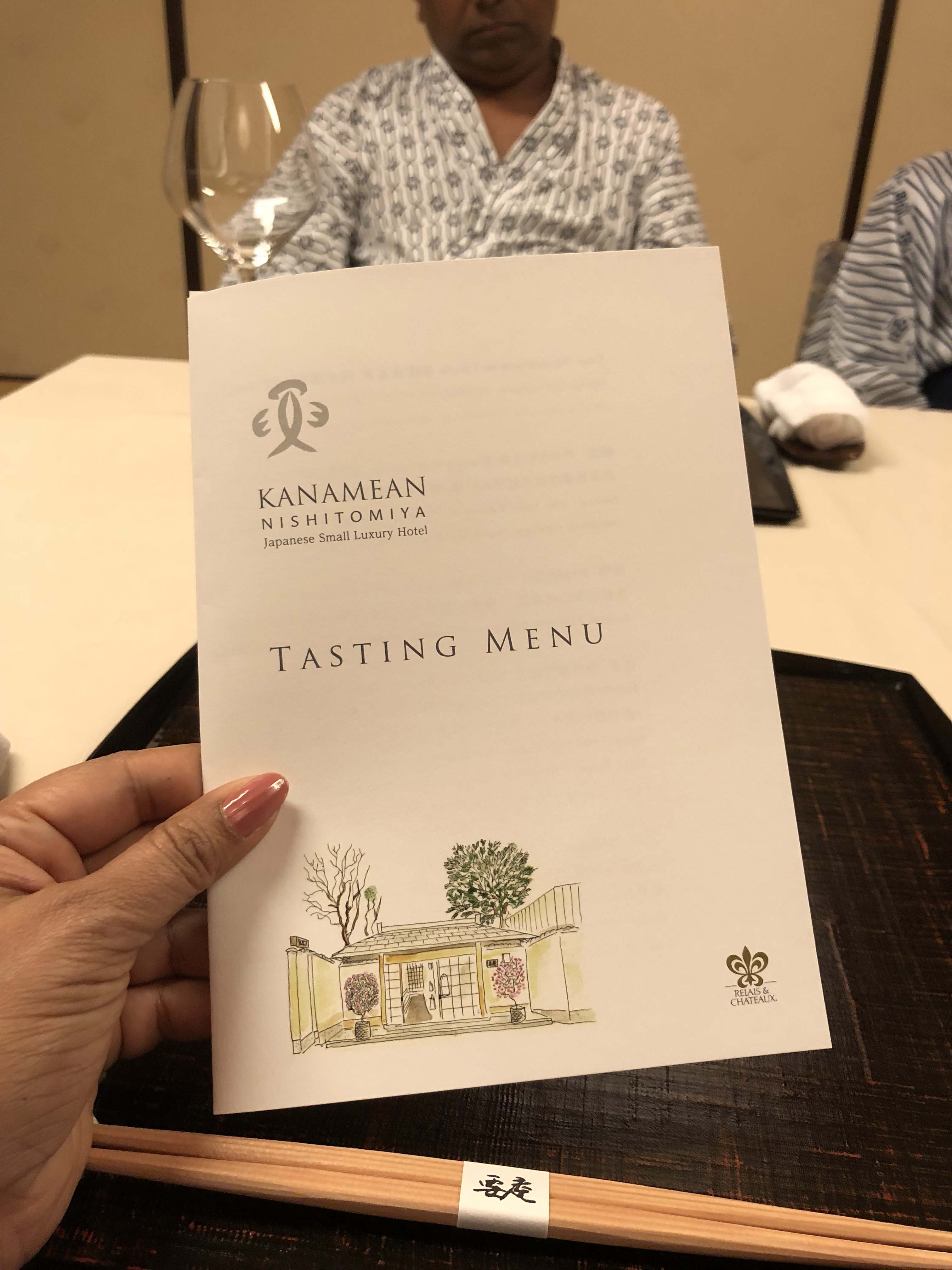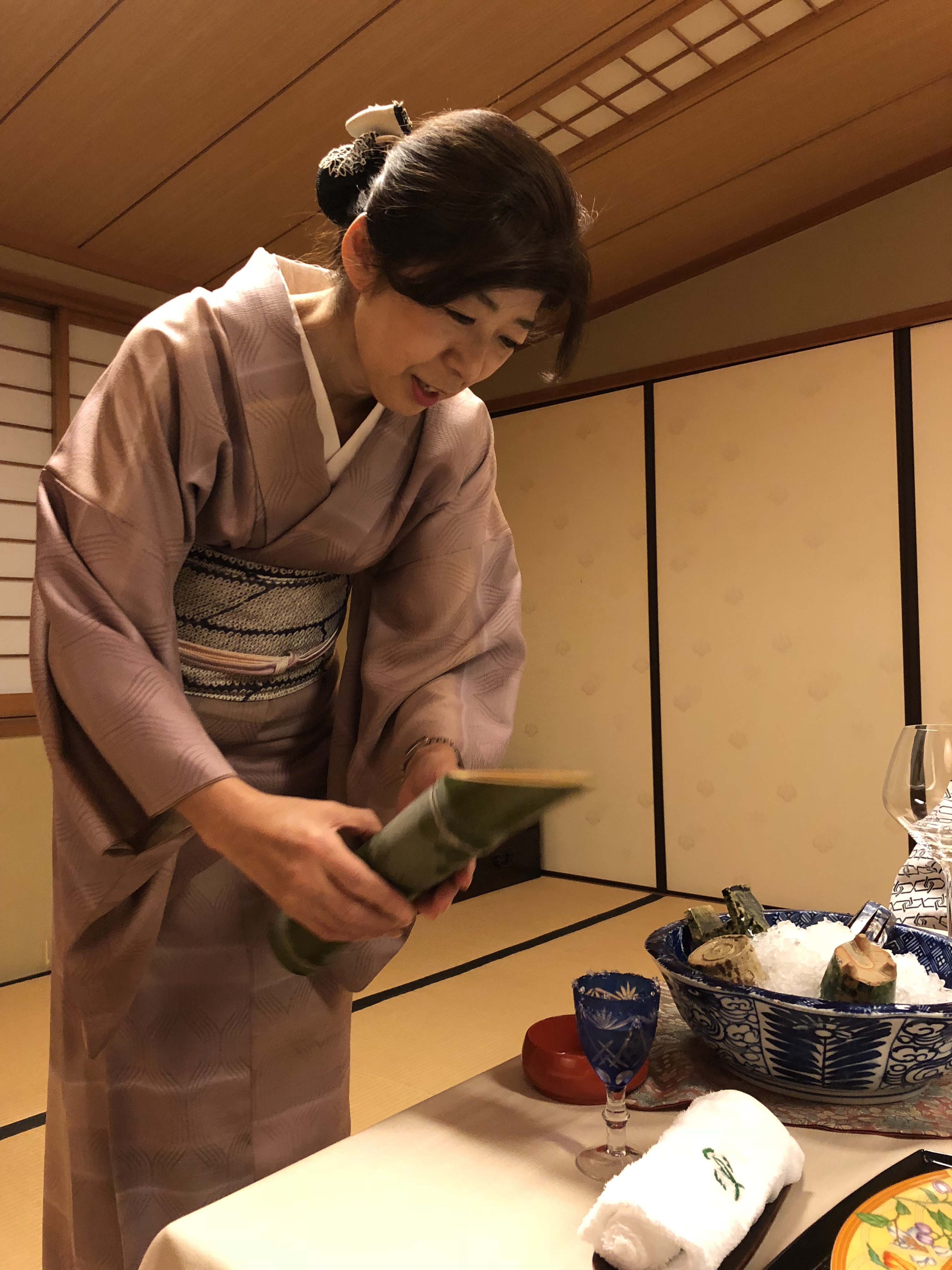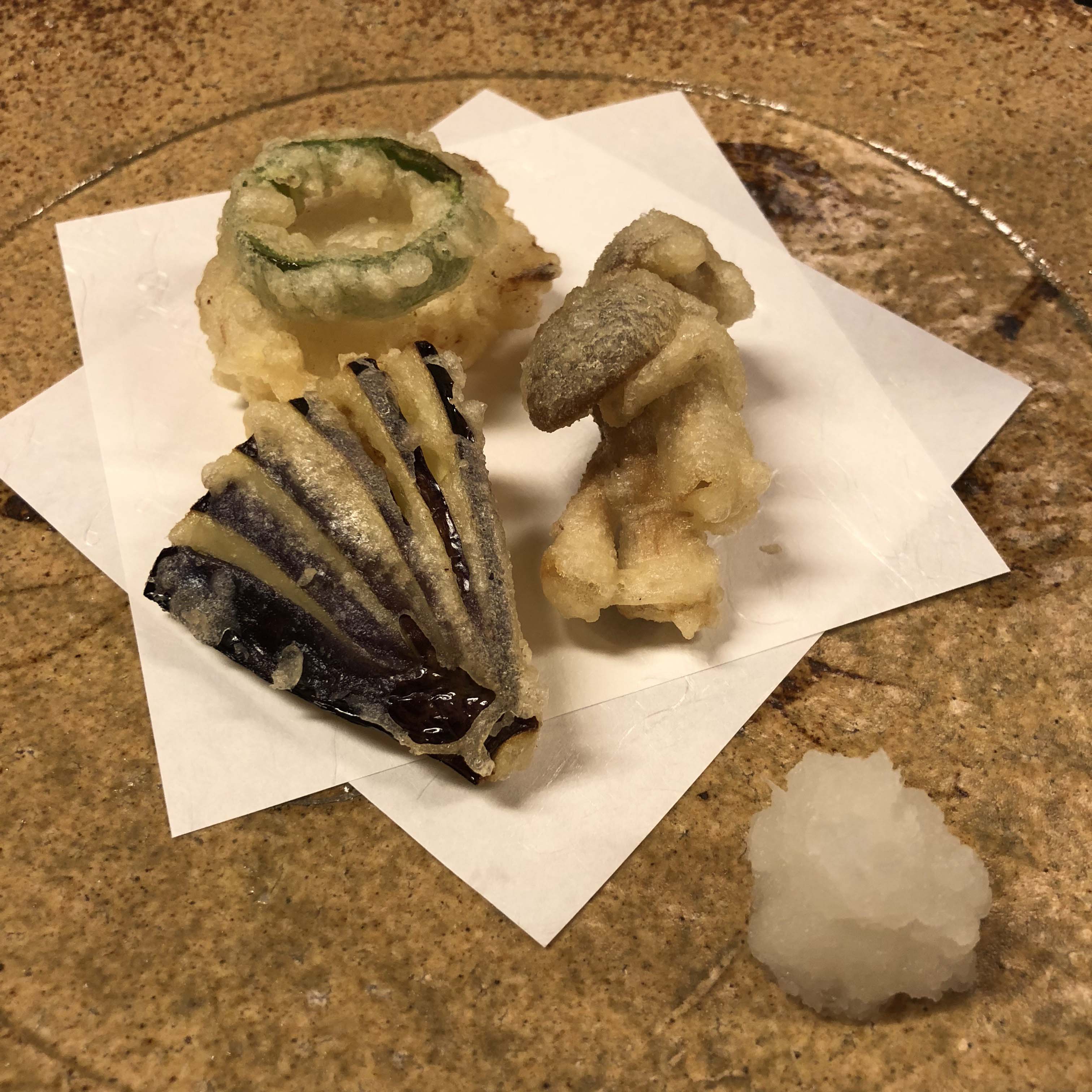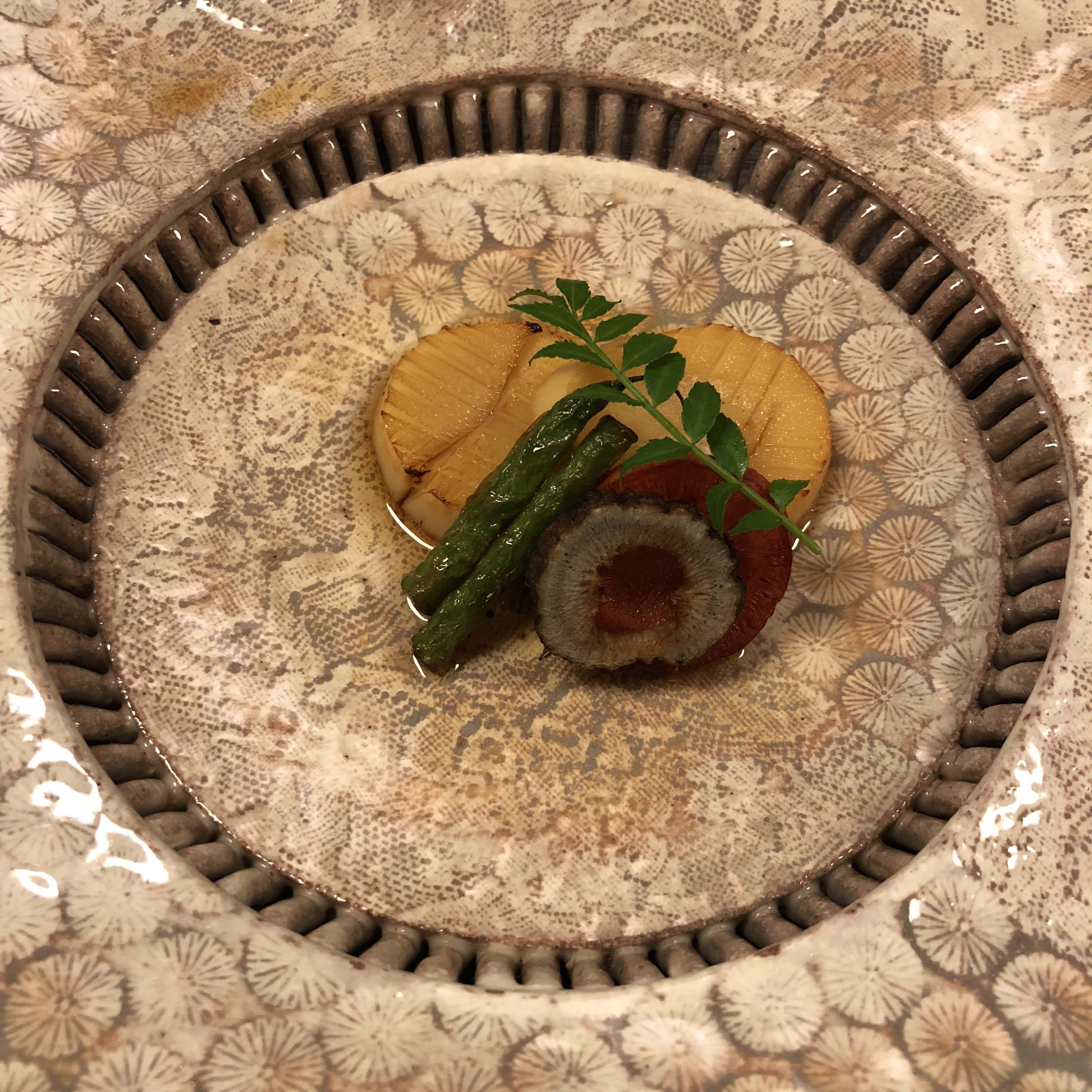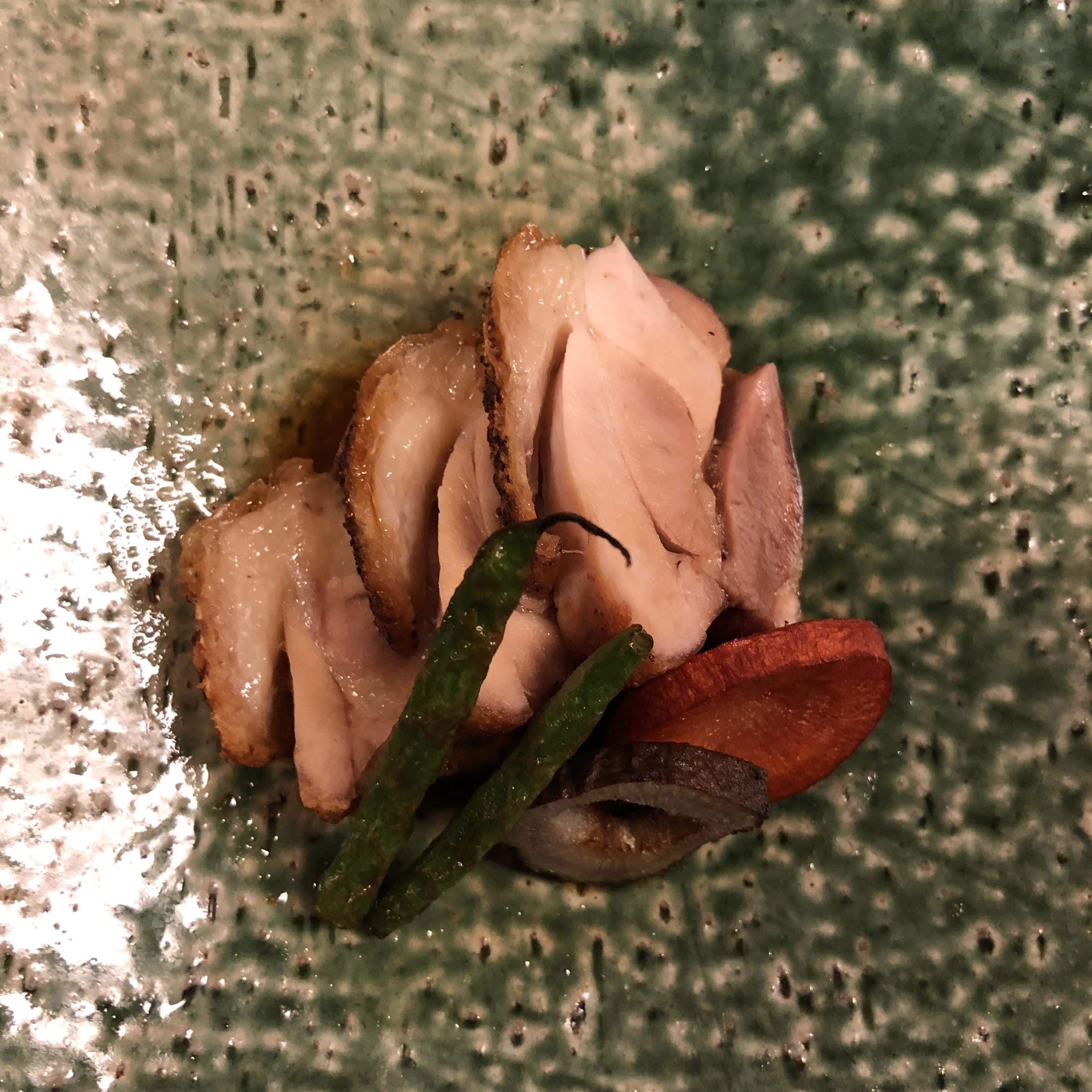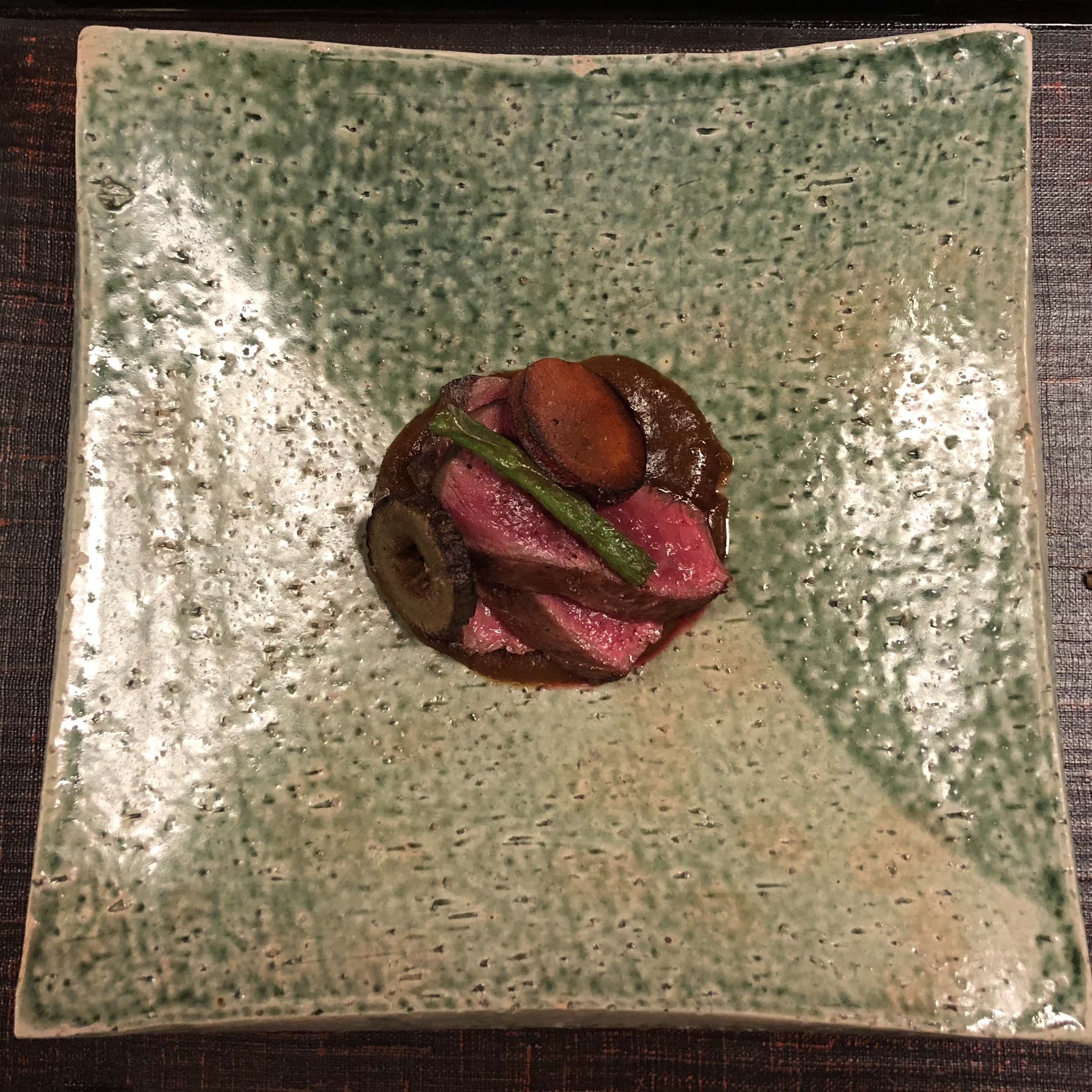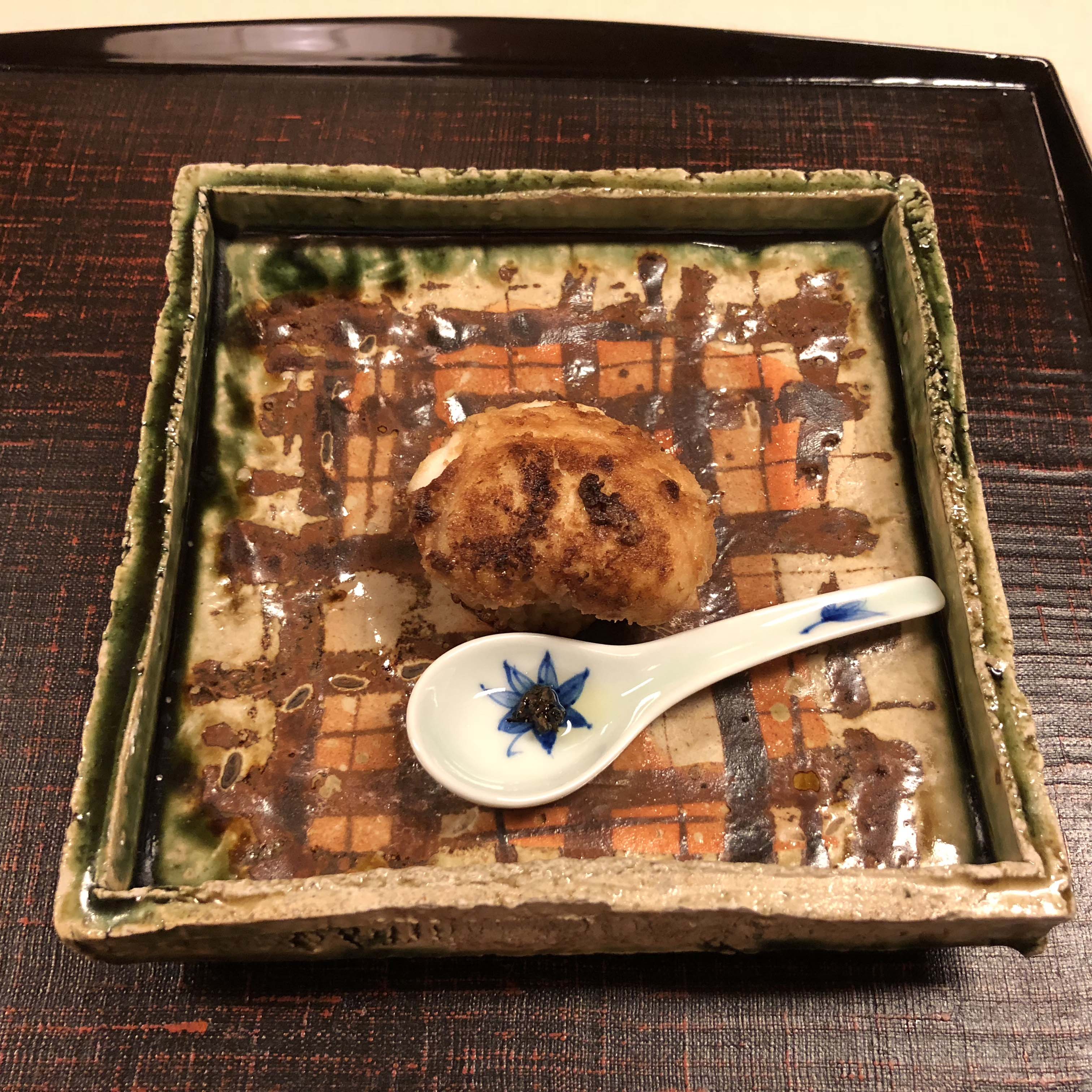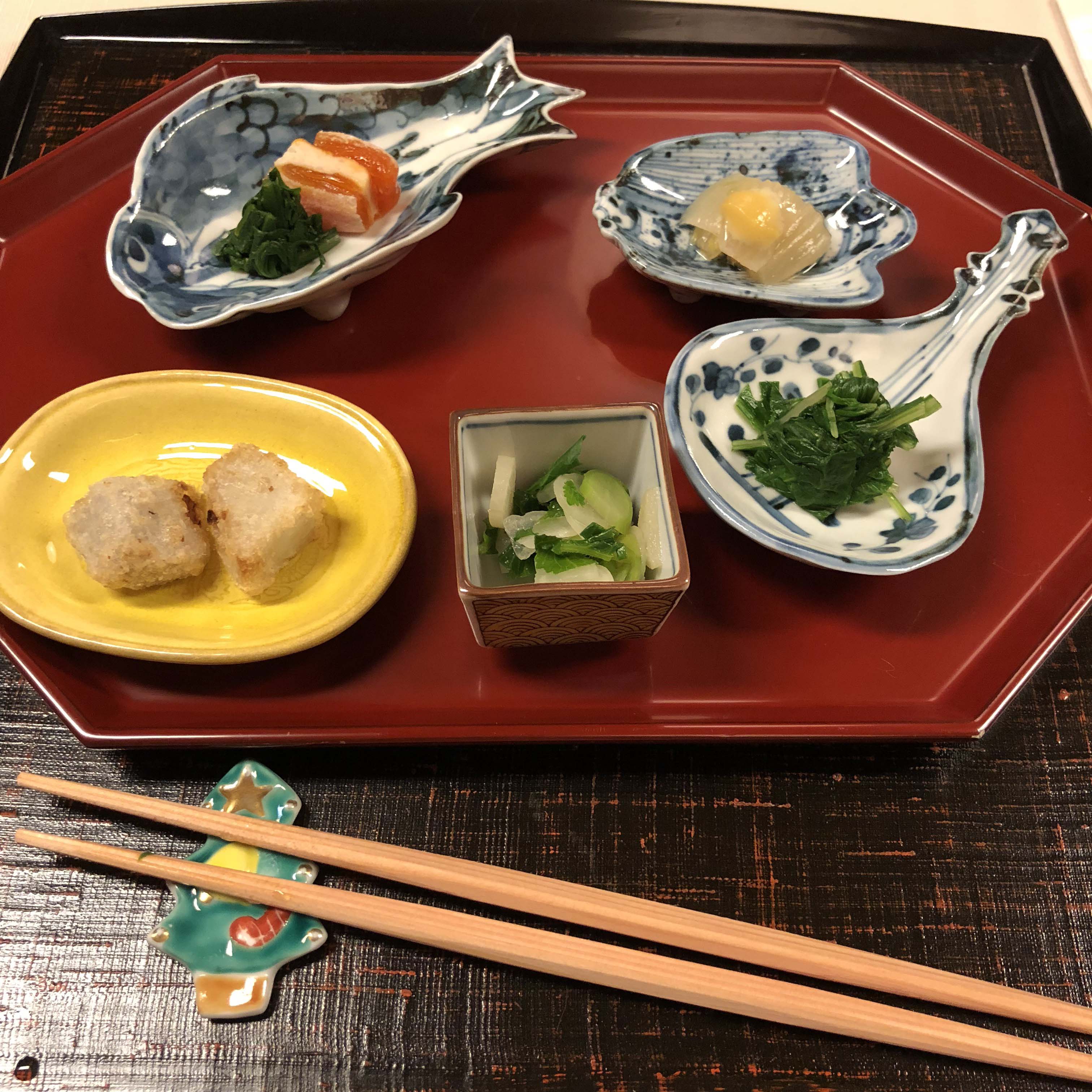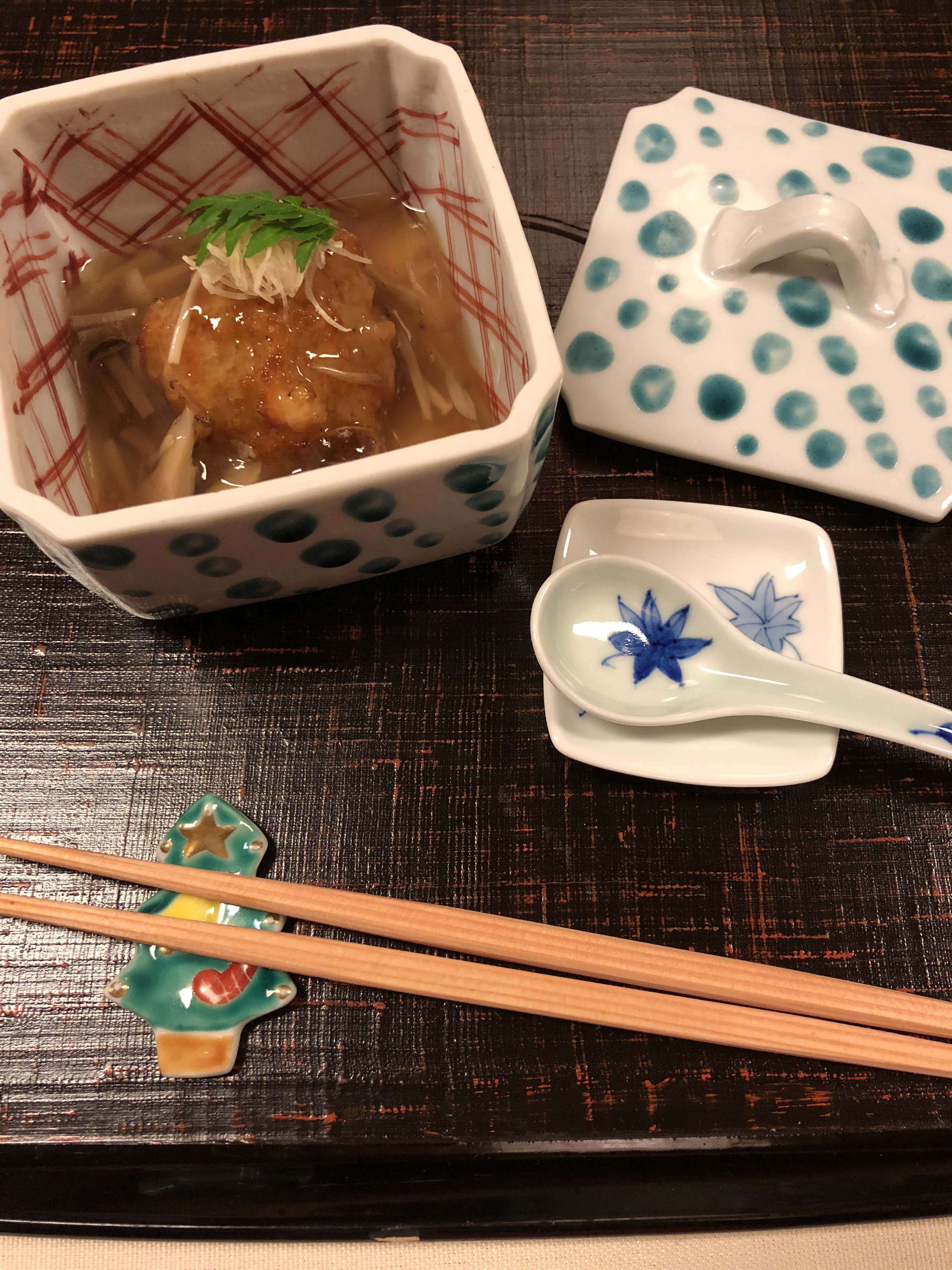- 64Pinterest
- 18Facebook
- 1Email
- 0Reddit
- 83shares
After a few days in Tokyo, we were ready to see the traditional and quieter side of Japan. We flew from Haneda airport to Itami, Osaka instead of taking the Shinkansen bullet train so that we can take a quick look at Mt Fuji from the top. We hired a private taxi to take us from the airport to our hotel in Kyoto – Kanamean Nishitomiya which is known as one of the best Luxury Ryokan in Kyoto that promised an authentic Japanese experience.
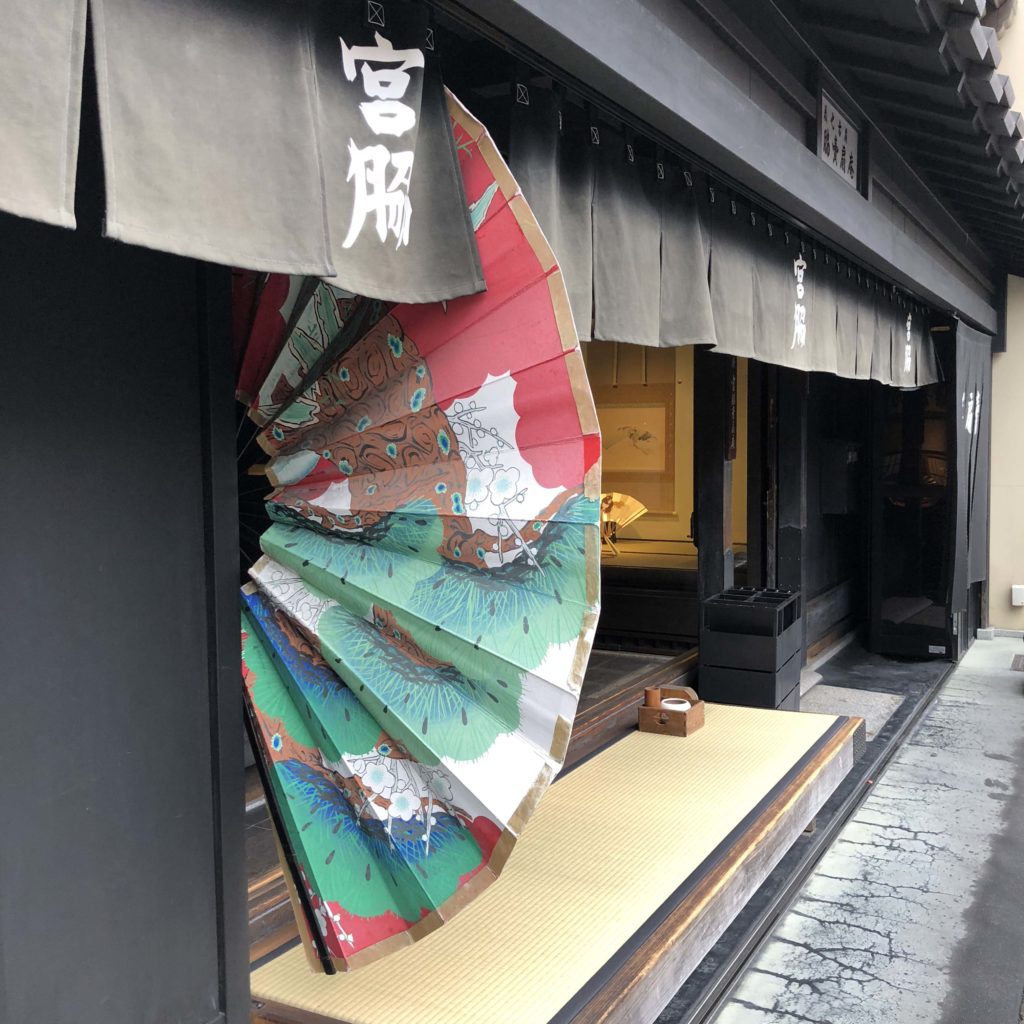
As our taxi pulled into the Honeyanocho district and drove past several traditional wooden houses we knew we were in the right place. Many artisans have been making their livelihoods by creating these hones(fans) for years pointed our English speaking guide and driver.
Once we reached our Ryokan, dressed in a traditional floral kimono with wide sashes and obi around her waist Mrs. Nishida welcomed us to Kanamean Nishitomiya with some warm green tea and matcha cookies.
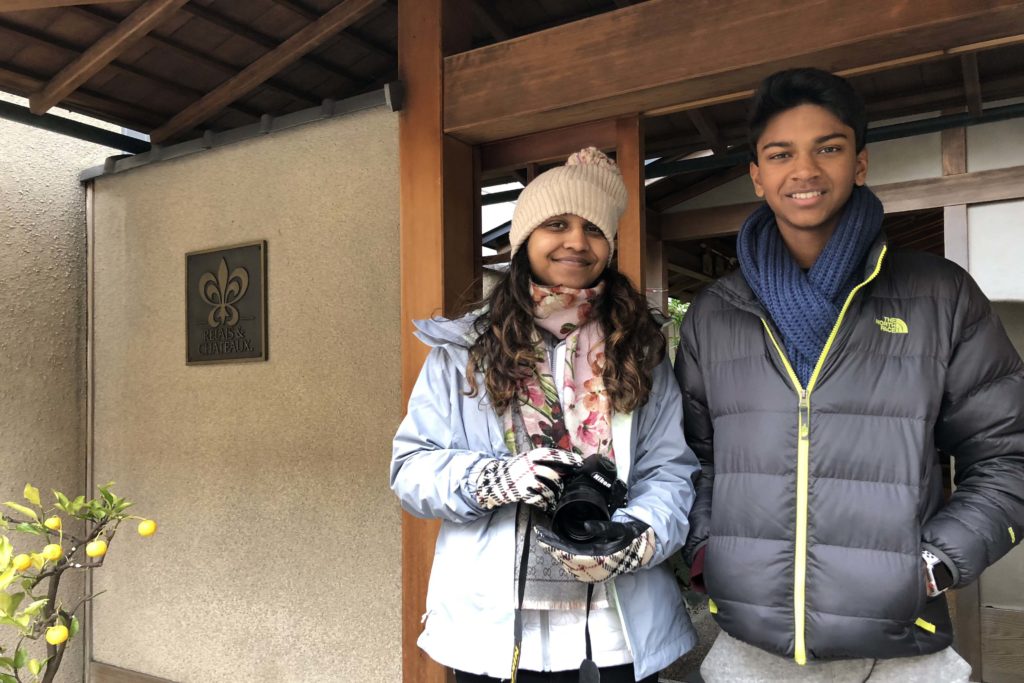
WHAT IS IN THIS POST
Best Luxury Ryokan in Kyoto: Kanamean Nishitomiya Review
Mr. and Mrs. Nishida run the Relais & Chateaux property which has survived in the modern surroundings of downtown Kyoto. The traditional wooden house is a luxury ryokan and has only seven suites all furnished with futons, tatamis, wooden bathtubs and bamboo furniture. The library is stocked with books and there is even a little Japanese garden with seasonal flowers in the back.
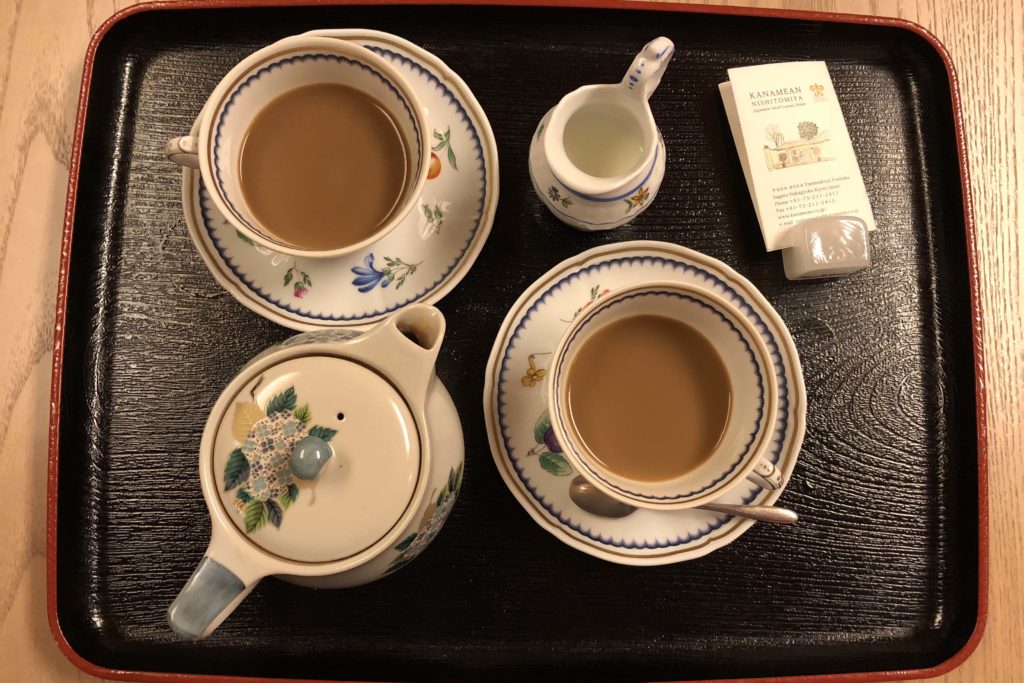
We woke up to coffee and breakfast in the quiet of the mornings and all you can hear were whispers and kimonos shuffling on the tatami mats. After a long and relaxing bath in the en-suite bathroom fitted with a nice wooden bath, we were ready for the day ahead. Absolutely the best Luxury Ryokan in Kyoto!
The hotel staff had arranged a car for us to visit the many temples – Shinto and Buddhist shrines as well as some little known Zen temples and gardens One of the Zen gardens we visited was so peaceful and serene that you could hear your own breath.
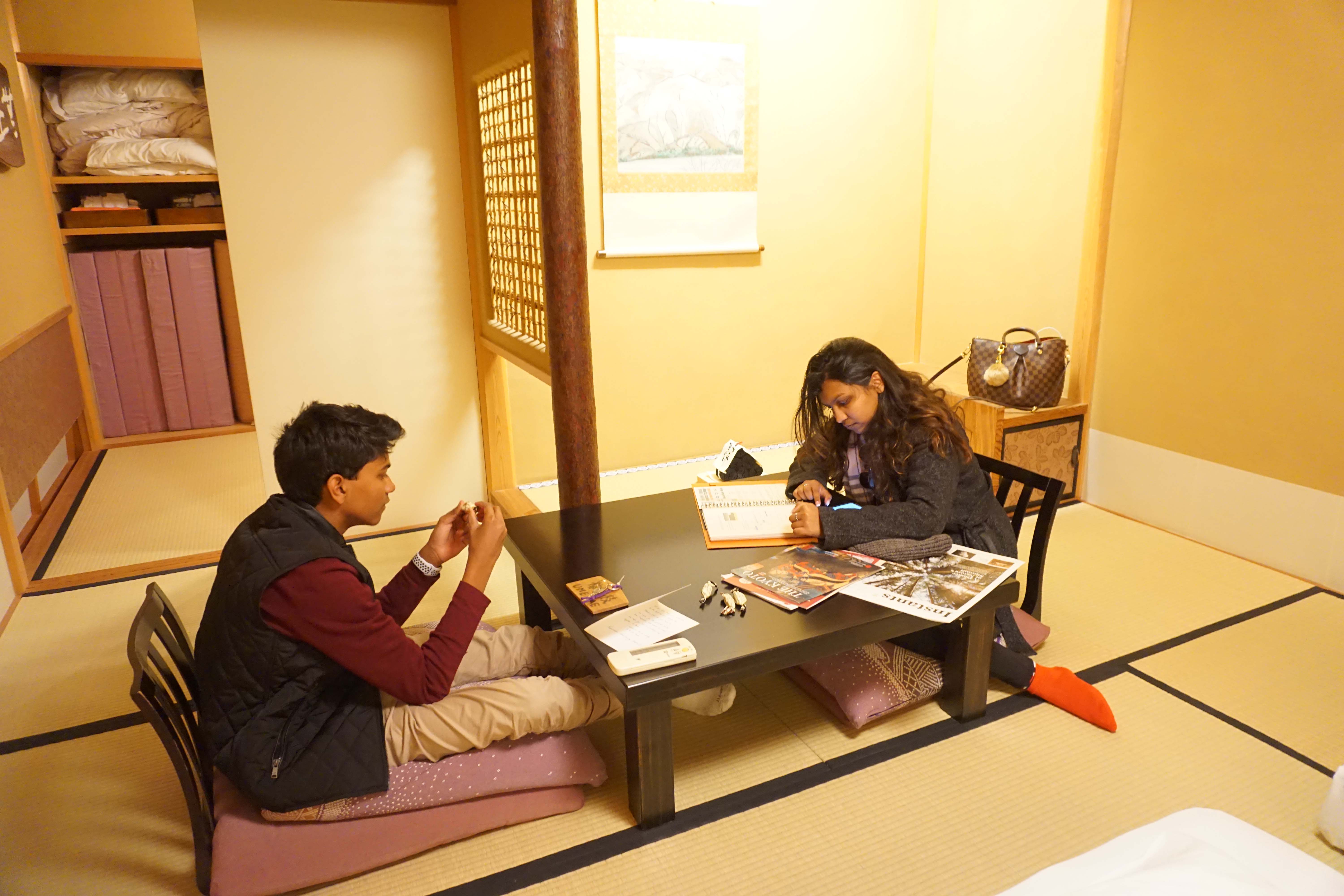
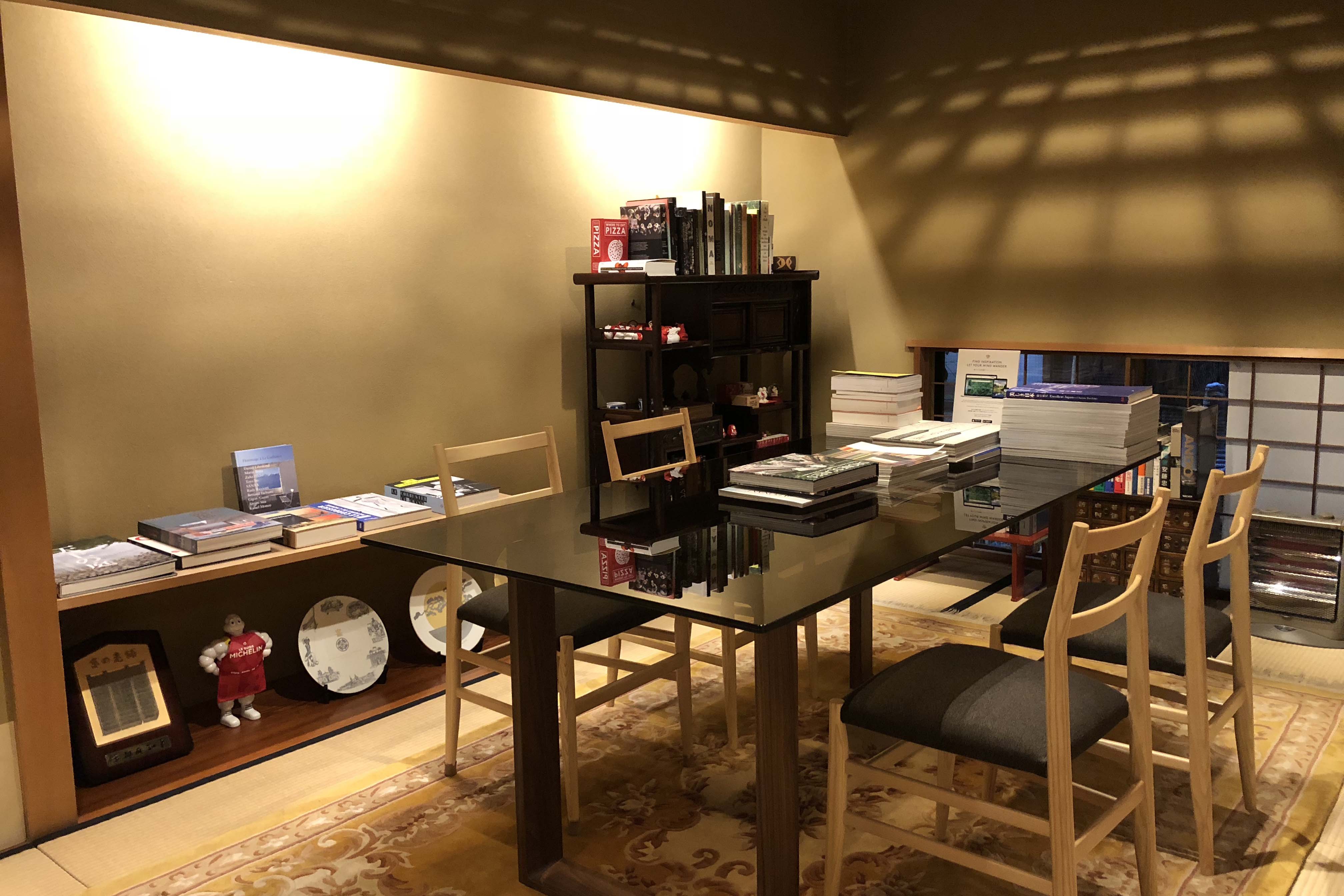
We visited the gilded Kinkakuji, once a shogun’s retirement villa and now a Zen Buddhist temple walked up to the Fushimi Inari trail, and took a rickshaw at the Arashiyama bamboo forest. Later that afternoon we walked to Nishiki Food Market nearby for a late lunch prepared in small stalls and then wandered into the shopping area.
There was a Jean-Paul Hevin chocolate shop around the corner for coffee or champagne and cake. We tried shabu shabu one night – while the boys dipped thin slices of Kobe beef in a hotpot and sauces I devoured the vegetarian version made for me.
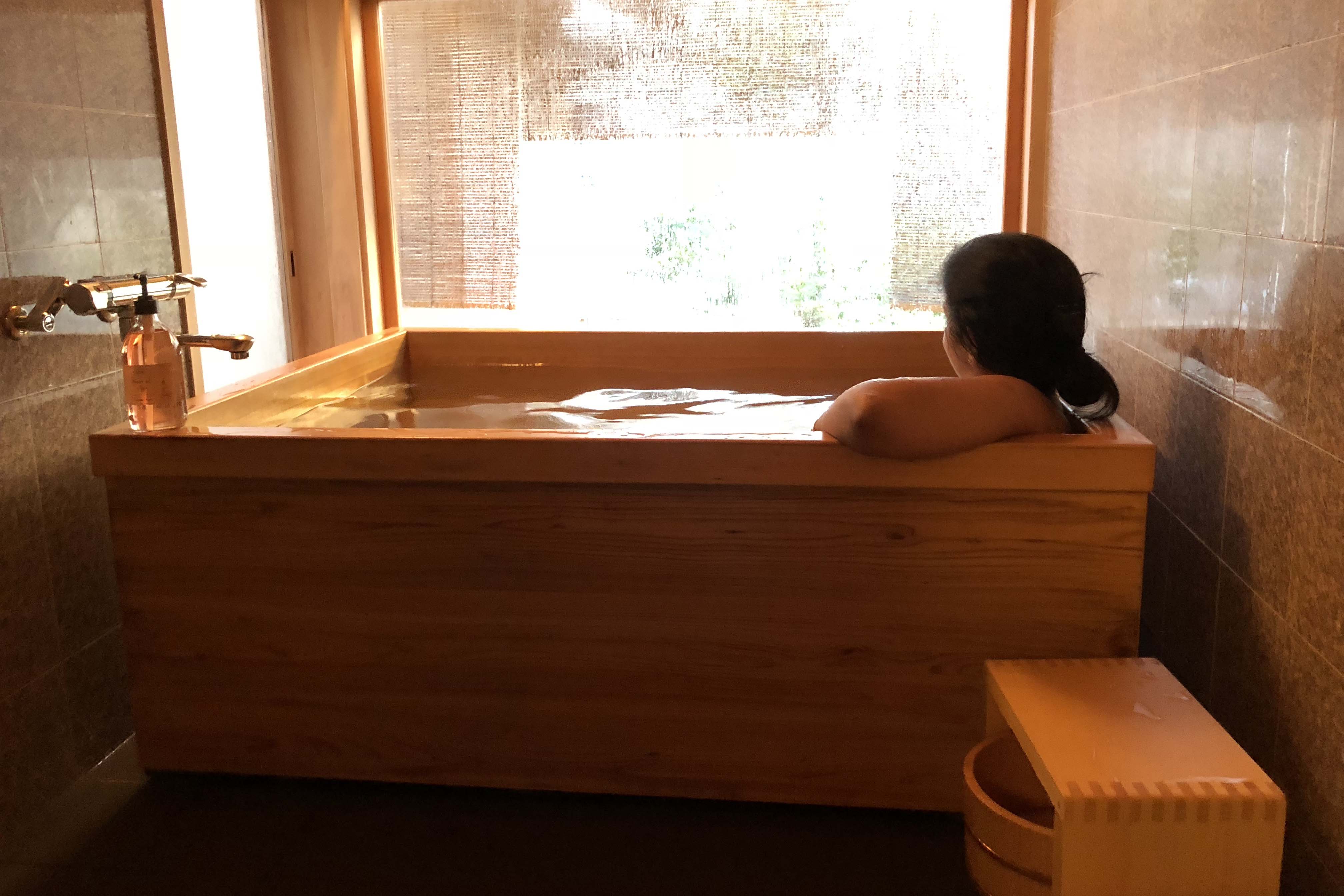
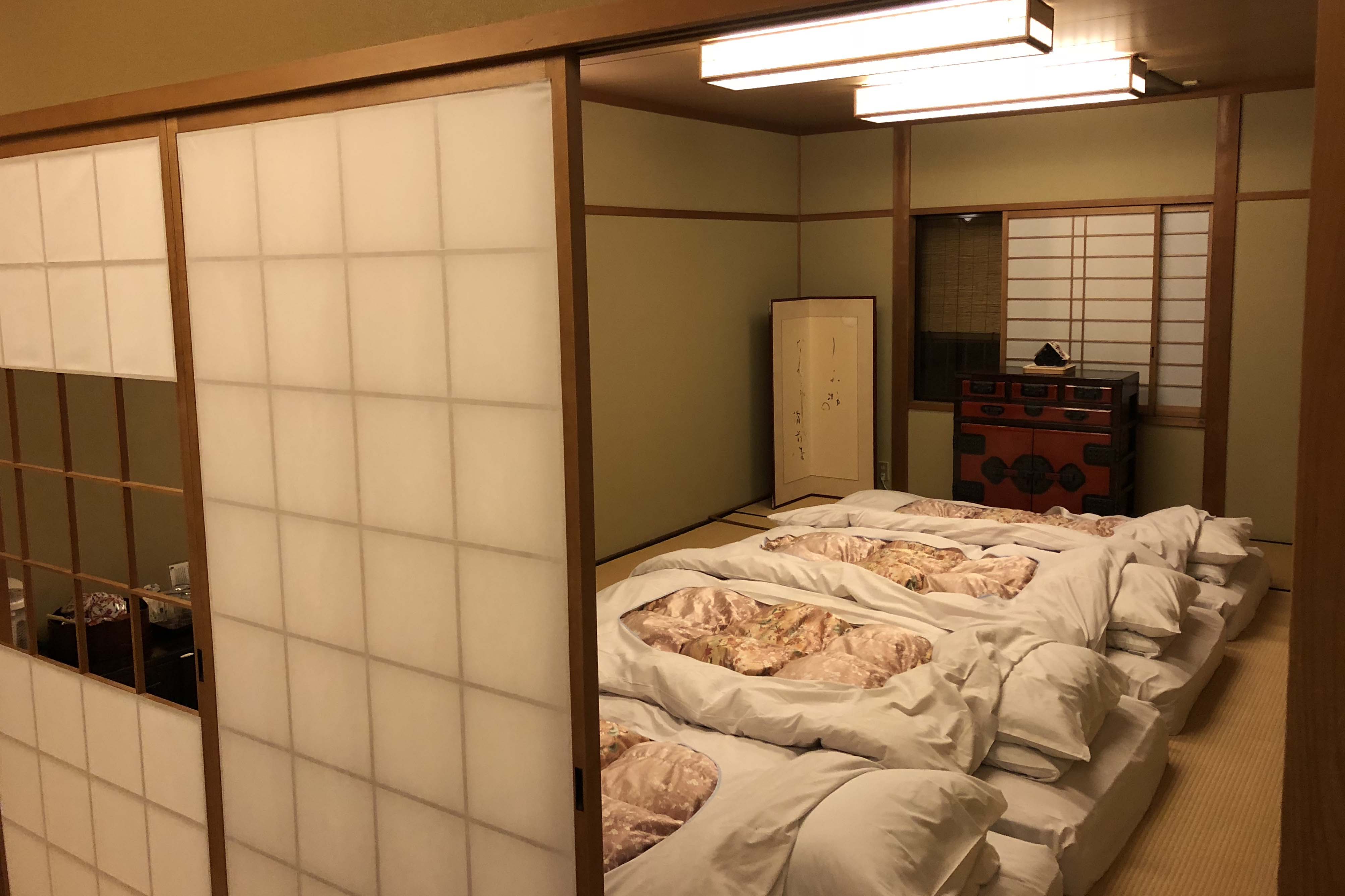
When we came back to our rooms our futon beds were laid out on the floor and ready for us. Now, we know why they are known as the best Ryokan in Kyoto!
What are Tatami rooms?
A tatami is a type of mat used as a flooring material in traditional Japanese-style rooms. Traditionally made using rice straw, the size of a room is measured in how many tatami mats that would fit it, e.g. an 8-mat room or 16-mat room. Footwear should be removed before stepping onto tatami.
The minimalistic room usually has room dividers or Shoji Screens to add style and to separate the sitting area. Low tables are used in the traditional sitting area since sitting on the floor is common practice.
During the colder months of the year, heatable low tables (kotatsu) are popular. They are covered by a blanket and heated underneath. Futon mattress are laid out at night on the tatami mats when it is time for bed and stored away during the day.
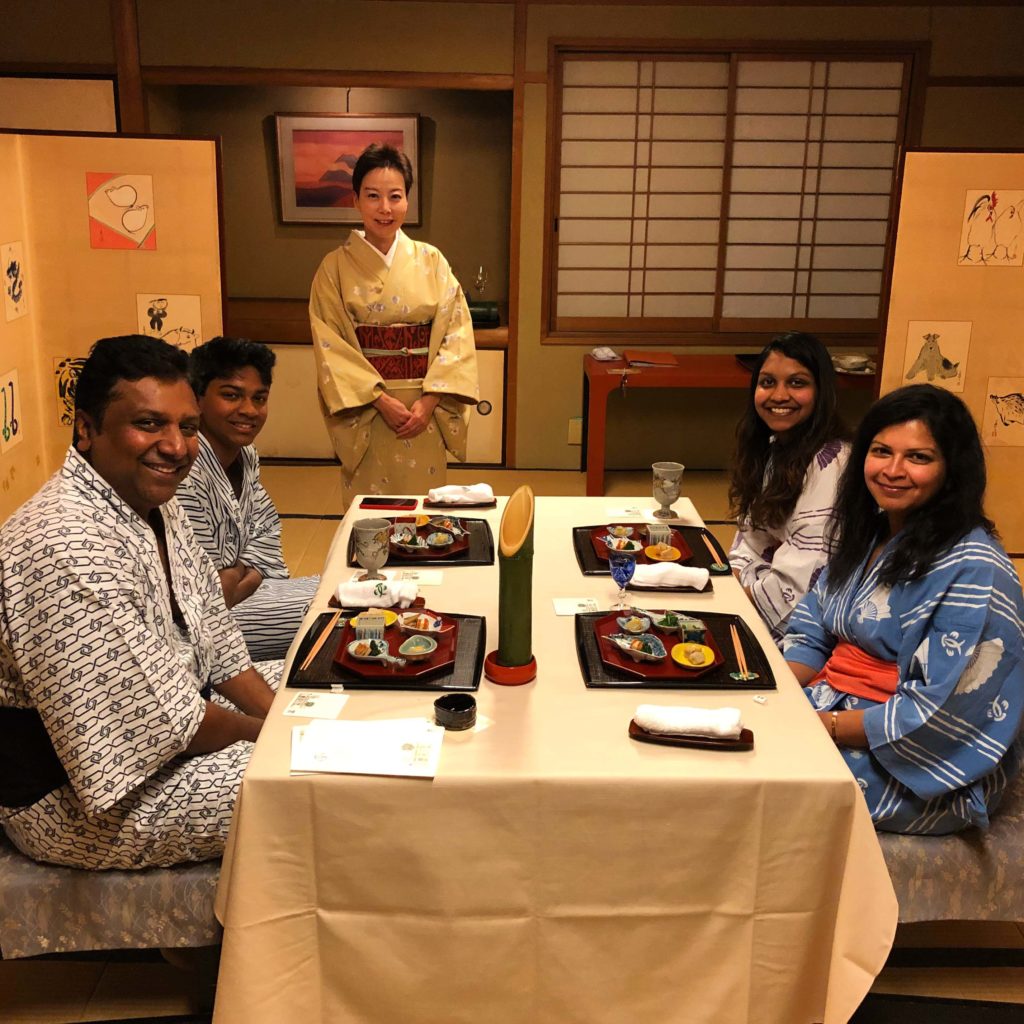
The best meal and the highlight of our entire trip was the Kaiseki meal prepared for us inhouse. After we changed into our cotton Yukatas we were led into a private dining room for a very special meal.
A Kaiseki Meal at Kanamean
The Kaiseki at Kanamean Nishitomiya are made with 3 ki – Kisetsu(season), Kikai(chance) and Ki (dishes) The menu changes every month and dishes are selected with a monthly theme like cherry blossoms in April, Gion festival in July, Moon watching in September and Autumn festivals in October. We were there was the Christmas/New Year meal.
Kaiseki is a traditional meal, where diners kneel on rice straw tatami mats and sample a series of small dishes made from seasonal ingredients, cooked in the most regional way possible in order to best bring about their flavors. This reverence for nature is closely linked to the changing of the seasons, which influences virtually every aspect of Japanese culture.
Mrs. Nishida knew our diet restrictions and altered the dishes to suit our tastes – there were appetizers of tempura vegetables, soup, steamed bamboo, fried rice, raw fish, chicken – all served in beautiful dishes – some were even delicate Hermès tableware with pretty floral and butterflies.
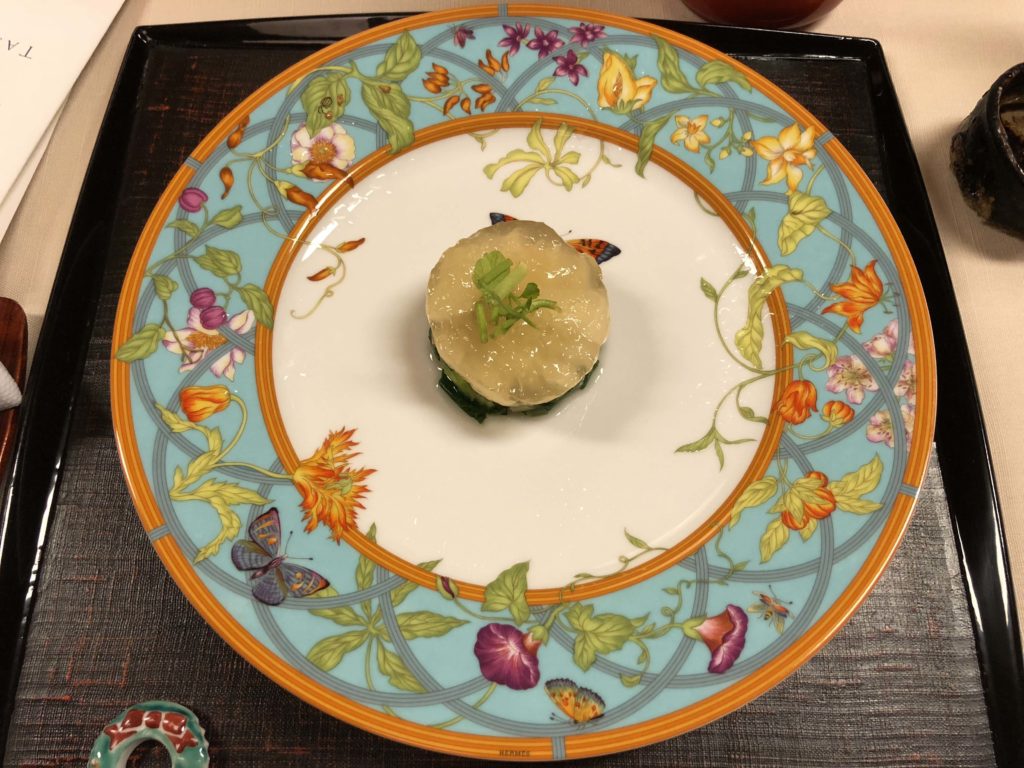
The meal was more expensive than the cost of the ryokan stay but worth every bit. We finished with a yuzu pudding served in lemon sized fruit that had distinctively Japanese fragrance crowed with a blushing strawberry. Not to forget the cold sake poured from a bamboo container… from the ingredients to the crockery and plating to service it was like witnessing an art form – a beautiful Japanese culinary art!
Photos from out Kaiseki Meal at Kanamean, a Michelin Star Restaurant in Kyoto
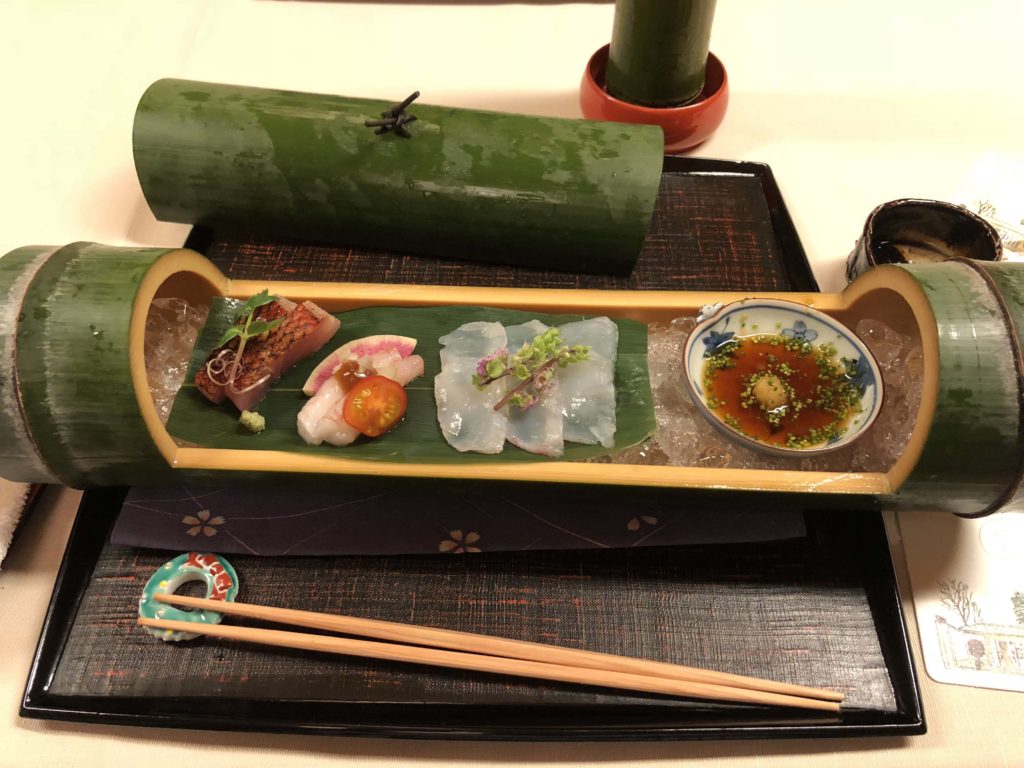
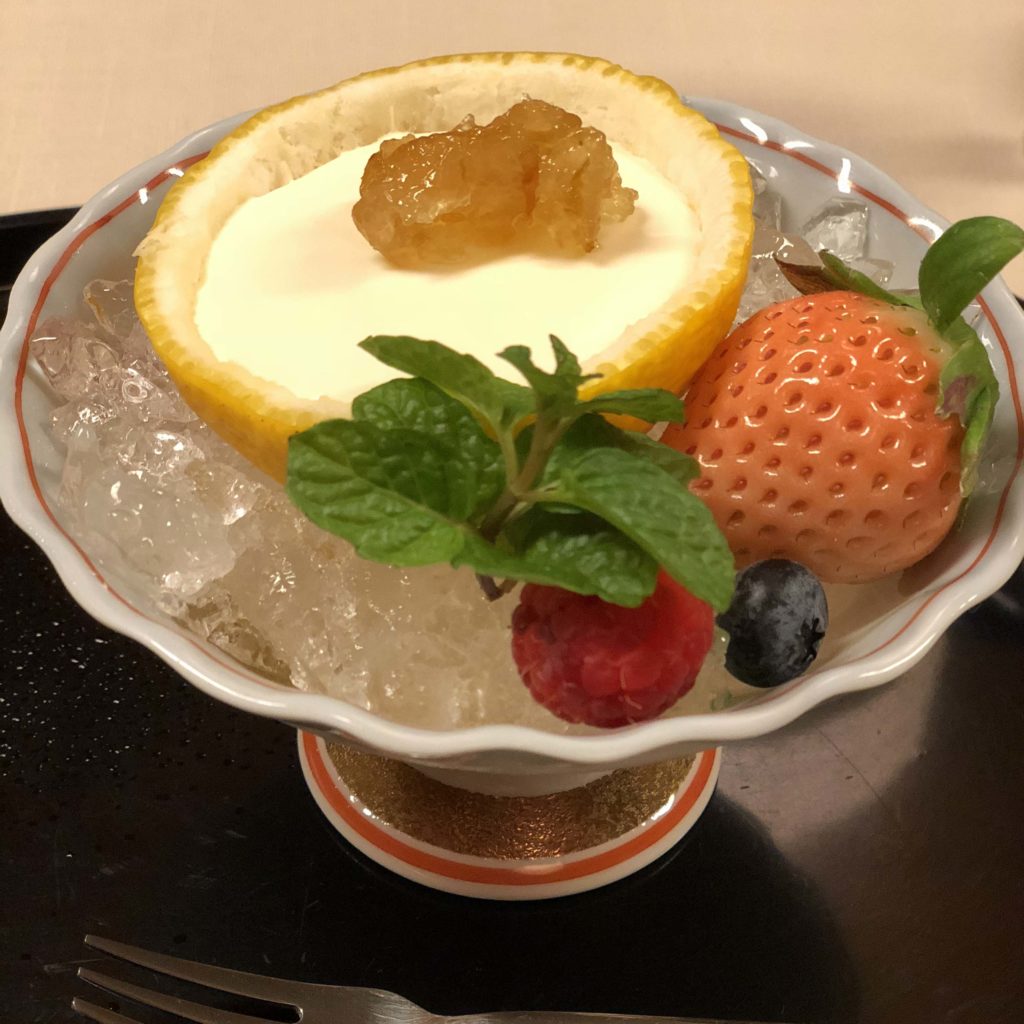
What we loved about our stay at Kanamean
We loved our stay at Kanamean even though some in our family had some initial reservations on sleeping on the floor. We found the futon mattresses quite comfortable. Our host meticulously prepared everything for us from our meal to our beds at night and helped ship our bags to Tokyo. They took care of us with genuine sincerity and great care.
Yukatas (in our sizes) with fan prints that pay homage to the history of the Honeyanocho district were our robes – everything little thing was so thoughtfully done.
Japanese people really strive to look after their guests without their guests needing to express their desires verbally. Absolutely the Best Experience and the Best Luxury Ryokan in Kyoto! We loved that about our stay and was the highlight of our Japan trip!
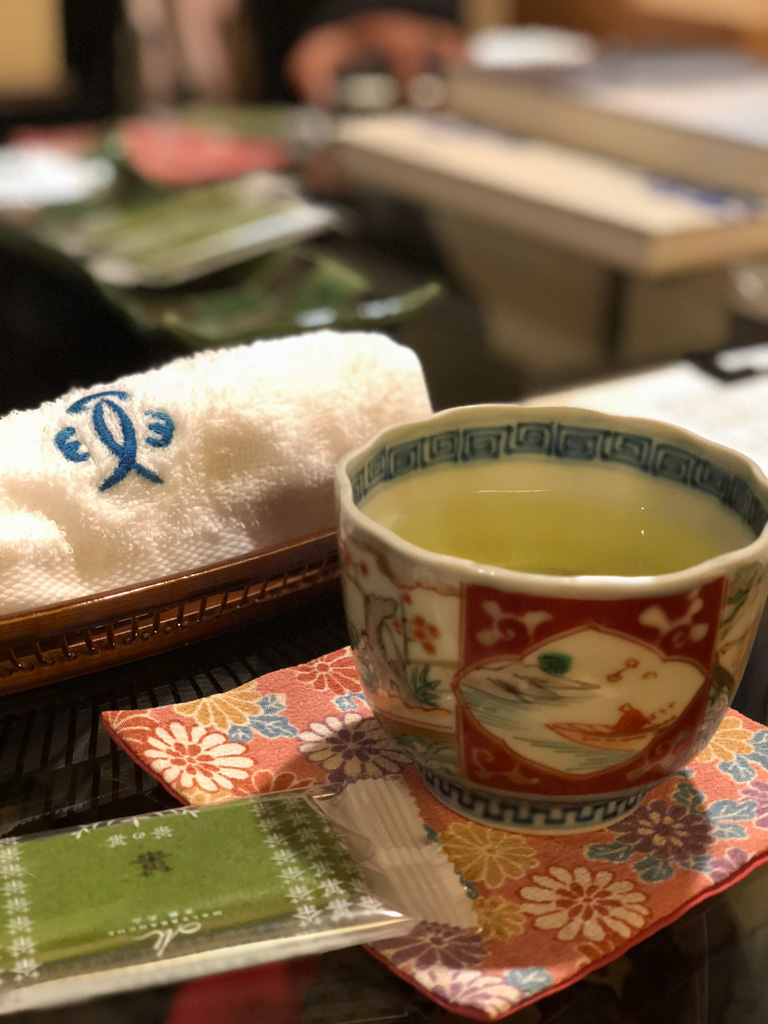
Why you must stay in a Ryokan for at least a night
Just like experiencing local food you have to experience the other elements of Japanese culture and customs like living in a room with Tatami floors and taking an Onsen hot spring bath.
Even if you don’t stay at Kanamen you can find other Ryokans in Kyoto in different budgets that offer an equally authentic experience. In Japan, there is a proverb: “Go ni itte wa go ni shitagae” – which literally means, “When in a village, do as the villagers do”, which is equivalent to the English proverb, “When in Rome, do as the Romans do.” I hope you get to experience authentic Japanese hospitality on your trip to Japan!
You might also like:
Two week Itinerary for seeing the Best of Japan
Japanese Food you must try
Beautiful Zen Temples in Japan
A day in Nara
And other posts from Japan
You might also like these family friendly hotels and resorts.
PIN IT FOR LATER
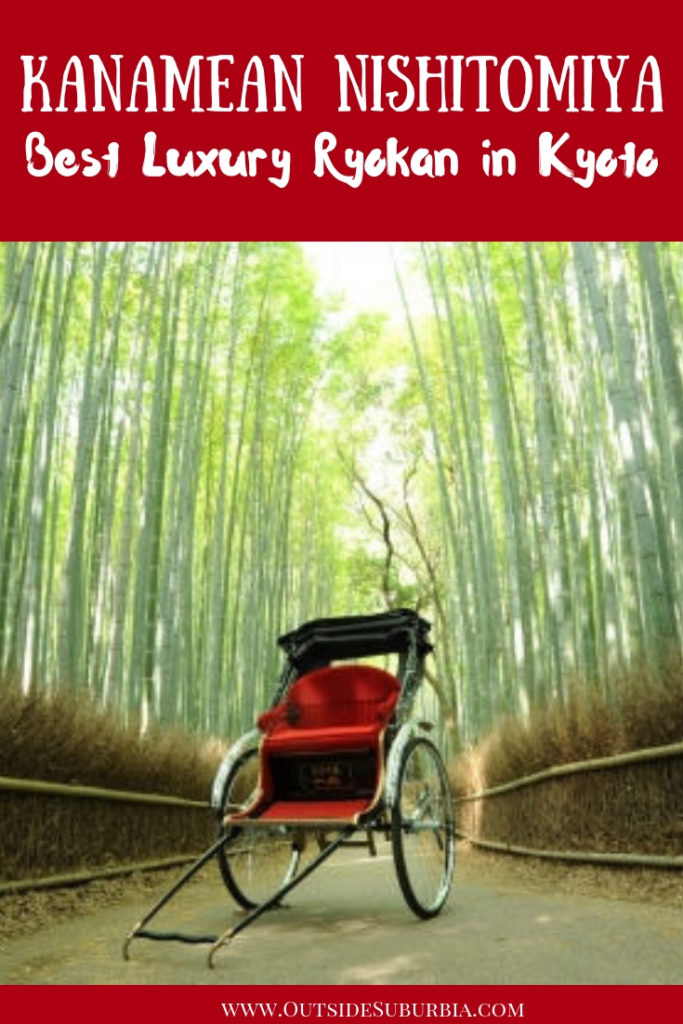
Note: This post may contain affiliate links, partnership or sponsored content. If you purchase an item via one of these links, we may receive a small commission at no extra charge to you. But as always images and opinions are our own. For more information on our affiliates and privacy policy at Outside Suburbia see here.
CONNECT WITH US

